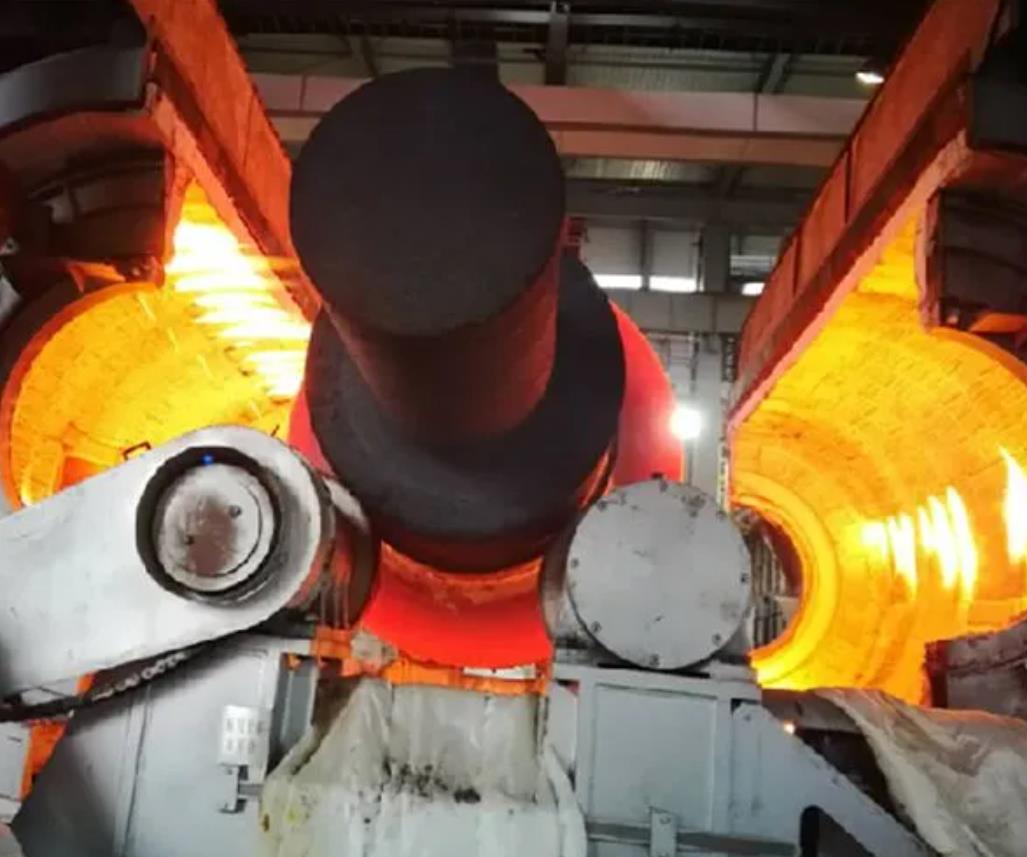Description:
The plate rolling mill is the largest unit in steel rolling equipment. Rolls are the core components that directly deform the material. During operation, they contact the hot stock, inducing plastic deformation while enduring enormous and cyclic rolling forces due to rotation. In medium and heavy plate rolling, the deformation temperature typically ranges between 1150°C and 800°C. One side of the roll is intensely heated by the hot stock, while the other is rapidly cooled by water, creating extremely severe service conditions.
Keywords: Plate mill rolls, work rolls, backup rolls
Medium and heavy plate products serve a broad range of applications, including shipbuilding, bridges, boilers, containers, high-rise buildings, construction machinery, export markets, and oil and gas sectors. The diversity of products results in a relatively complex and variable production process.
Load Characteristics on Plate Mill Rolls:
In four-high medium and heavy plate mills, the roll shoulders of both backup and work rolls are subjected to significant stress. Stress-induced fatigue leads to work hardening distributed in a saddle shape along the roll barrel, with more severe effects at the edges than the center, increasing the frequency of shoulder-related failures.
Key Performance Requirements for Rolls:
| Roll Type | Hardness (HSC) | Work Layer σ (MPa) | Roll Neck σ (MPa) | Rolling Capacity (t/mm) | Single Weight (t) |
|---|---|---|---|---|---|
| Work Rolls | 68–76 | 420–620 | ≥400 | 3000 | 30–60 |
| Backup Rolls | 52–62 | 800–1000 | ≥700 | 26000 | 100–260 |
Rolling pressure in medium and heavy plate mills is extremely high. Newly installed four-high mills with roll diameters exceeding 3000 mm typically operate at 5000–10000 t. The roll neck must meet high strength requirements, generally not less than 400 MPa.
Reversible rolling involves repeated starts and stops, creating impact loads that demand high impact resistance from the rolls.
Single-pass reductions are large, and temperatures are high, requiring excellent thermal fatigue resistance in the roll working layer. Mills with fewer stands, especially single-stand four-high mills, require high surface quality and shape retention for the final product.
The rolling temperature range is wide (1150–800°C), necessitating a combination of wear resistance and thermal fatigue performance.

Application Cases of Plate Mill Rolls:
Work Rolls:
A 4300×4 single-stand plate mill line uses four high-NiCr indefinite chilled cast iron work rolls, each weighing 51.6 t. These rolls meet production requirements across multiple plants.
Average rolling capacity per millimeter in Plants A, B, C, and D is 3508 t/mm, 3611 t/mm, 3122 t/mm, and 4101 t/mm, respectively.
A 3500×4 single-stand mill employs two high-NiCr indefinite chilled iron work rolls under a maximum rolling force of 7000 t. Plants E and F report average rolling capacities of 3160 t/mm and 3240 t/mm, both exceeding the 3000 t/mm requirement.
Backup Rolls:
In a 3500×4 plate mill, backup rolls weigh over 120 t each. X forged steel and Y composite cast steel backup rolls (material: Cr3) are used.
X forged steel backup rolls are typically replaced after 60,000–80,000 t, with a rolling capacity of 16,200 t/mm. Y composite cast steel rolls are replaced after 50,000–60,000 t, with a capacity of 13,700 t/mm.
Common Issues in Roll Usage:
The anti-spalling stability of centrifugally cast high-NiCr indefinite chilled iron rolls needs improvement, as reported in 3500×4 and 4300×4 production lines. Attention must also be paid to the design and manufacturing of work roll neck strength.
Cracking and spalling at the roll shoulder are frequent in backup rolls during plate production, related to the specific load characteristics in plate rolling.
Stress concentration occurs at the edges where the plate, work roll, and backup roll contact. Repeated cycles under high residual shear stress can initiate subsurface cracks, which may propagate and cause spalling.
Management Measures for Plate Mill Rolls:
Effective Cooling:
Adequate cooling is critical to managing thermal cracking. High surface temperatures increase thermal stress and risk roll failure. Sufficient cooling water must be supplied to control the roll surface temperature below 70°C while maintaining plate shape.
Scheduled Roll Replacement:
Plate production often follows a “widen first, then narrow” strategy. In later rolling stages, the roll center wears significantly, forming a concave profile and increasing stress.
Cast steel backup rolls are replaced every 50,000–60,000 t (avg. 55,000 t). Forged steel rolls are replaced every 60,000–80,000 t (avg. 70,000 t). Work rolls are generally replaced after 4000–5000 t; for high-strength steel production, replacement occurs around 3500 t.
Grinding Practices:
Scientific regrinding maintains roll profile, ensures dimensional accuracy, and guarantees safe operation. After removal, the grinding amount is determined based on surface hardness tests. The fatigue layer must be completely removed, and all cracks ground out. Fluctuations in cooling deepen fatigue cracks, which can expand under shear stress and cause spalling. Cracks must be fully eliminated before reusing the roll. Plants such as Shougang employ non-destructive testing for crack inspection.
Roll Profile Design:
In plate rolling, high stress concentrates at the shoulders of backup and work rolls. Shougang’s 3500×4 and 4300×4 mills have introduced a 200–500 mm long relief zone at the end of the backup roll barrel, significantly improving equipment stability.

